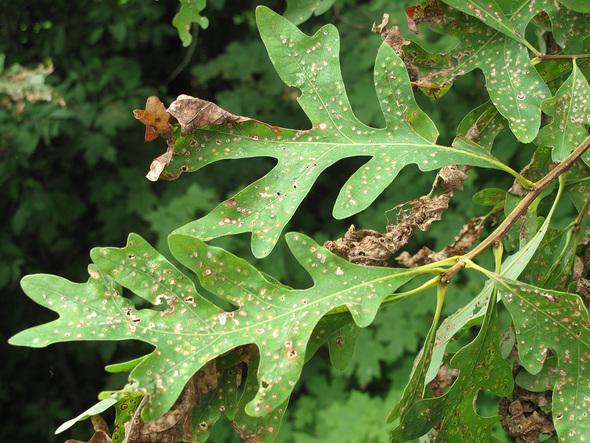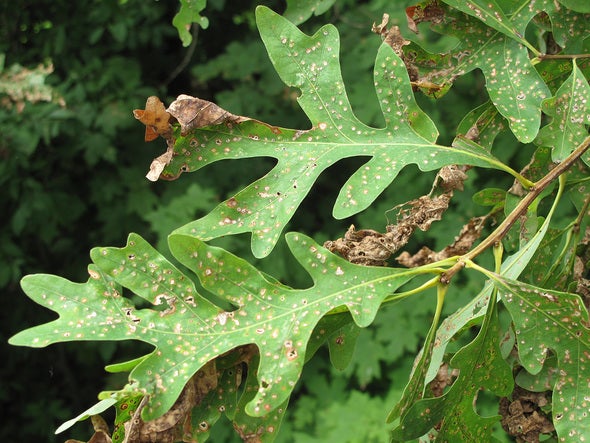
Xplor reconnects kids to nature and helps them find adventure in their own backyard. Free to residents of Missouri.


































Stay in Touch with MDC news, newsletters, events, and manage your subscription

Xplor reconnects kids to nature and helps them find adventure in their own backyard. Free to residents of Missouri.

A monthly publication about conservation in Missouri. Started in 1938, the printed magazine is free to residents of Missouri.


CAPE GIRARDEAU, Mo. -- Southeast Missourians are reporting a strange condition on the leaves of oak trees. An even stranger phenomenon is occurring on the ground underneath the affected trees. Jennifer Behnken, MDC’s community forester for the southeast region, said many people are starting to notice their oak trees turning brown, with pin-head sized bumps and brown pock marks on the bottom of the leaves. Behnken said these symptoms are signs of jumping oak galls. She added this phenomenon mainly affects white oak trees.
The bumps on the leaves eventually turn brown and fall to the ground where they commence bouncing, as if they were alive. In fact, something is alive in there. The balls are galls -- abnormal growths, sort of like tumors, caused by a disruption of the normal growth pattern in the leaves. They develop when tiny stingless wasps of the genus Cynipidae lay their eggs on oak leaves.
“The galls provide both food and shelter for growing wasp larvae,” Behnken said.
The bouncing is caused by vigorous movement of the larvae inside. The random motion causes the galls to settle into leaf litter and crevices where they will be protected from the rigors of winter.
Behnken said the galls rarely cause significant damage to trees, although they’re unattractive.
“They are just one of life’s irritations for healthy oak trees,” she said. “The outbreak of these types of galls will last approximately one to two years, then naturally die back.On the other hand, oaks that have fungal infections or have suffered extensive limb loss due to ice or wind already are stressed. For these trees, the demands of replacing dead leaves can lead to long-term decline in health.”
Good growing conditions and sanitation helps minimize the severity of jumping oak gall infestations. This includes watering during droughty weather, proper mulching practices, being careful not to damage the bark while mowing and trimming, and fertilizing trees in the spring. It’s also a good idea to remove fallen leaves and burn or compost them.
Although jumping oak galls are the main cause of oak trees turning brown, they are not the only cause of leaf discoloration in oak trees. Fungus infections can also cause problems for trees. This problem also seldom is fatal to oaks, and no actions are needed to help trees recover, other than those noted above.
More information about jumping oak galls is available at mdc.mo.gov.